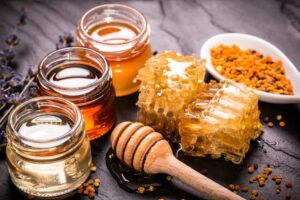
In January-May 2024, Ukraine exported 589.86 tons of organic honey, which exceeds last year’s figures, the OrganikInfo portal reported, citing data from the Organic Standard certification body.
According to the report, in recent years, the dynamics of growth in organic honey exports has been observed. Thus, in 2021, 269.33 tons of honey were exported abroad, in 2022 – 698.05 tons, and in 2023 – 702.9 tons.
“Organic honey is not among the top 10 products exported from Ukraine, but Ukraine remains one of the leading exporters of honey, including organic honey, and demand in the world is only growing,” said organic market analysts.
According to the data, in 2022, honey ranks 4th in terms of the volume of products imported to the EU and has a share of 9.2% of all organic imports.
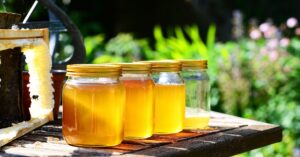
In 2023, the countries of the European Union imported 163.7 thousand tons of honey for a total of EUR359.3 million, according to the Statistical Office of the European Union (Eurostat).
Exports of honey from the EU countries amounted to only 24.9 thousand tons worth EUR146 million.
Over 10 years, since 2013, imports have increased by 20%, exports – by 14%.
Last year, the main suppliers of honey to the EU were China (60.2 thousand tons, or 37% of all foreign supplies), Ukraine (45.8 thousand tons, 28%), Argentina (20.4 thousand tons, 12%), Mexico (10.7 thousand tons, 7%) and Cuba (4.7 thousand tons, 3%).
The UK became the main importer of honey from the European Union – 4.3 thousand tons. Saudi Arabia, Switzerland and the United States imported more than 3 thousand tons.
The largest buyer of foreign honey among the EU countries was Germany, which imported 41 thousand tons in 2023. Belgium took the second place (31.4 thousand tons), and Poland was the third (23.3 thousand tons). Spain was the leading exporter (7.1 thou tons).
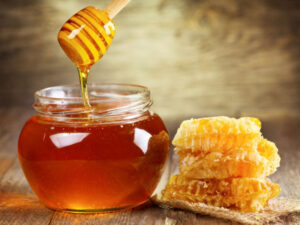
Ukraine in 2023 supplied the European Union market with 45.8 thousand tons of honey, which was the second result and accounted for 28% of all imports of this product by the Commonwealth countries, Eurostat reports.
According to the report, the largest supplier of honey in 2023 was China with 60.2 thousand tons and 37% of the market share, the third place belonged to Argentina with 20.4 thousand tons (12%), the fourth – Mexico with 10.7 thousand tons (7%), the fifth – Cuba with 4.7 thousand tons (3%).
The largest importer of honey in 2023 was Germany, which imported 41 thousand tons of honey from outside the EU, accounting for 25% of all EU imports. Belgium was the second largest importer with 31.4 thousand tons (19%), followed by Poland with 23.3 thousand tons (14%), Spain with 15.7 thousand tons (10%) and France with 7.7 thousand tons (5%).
In total, EU members imported 163.7 thousand tons of natural honey from non-EU countries in 2023, worth EUR359.3 million. At the same time, EU member states exported 24.9 thousand tons worth EUR146.0 million.
The UK was the leading buyer of honey produced in the EU in 2023 with 4.3 thousand tons (17% of all non-EU honey exports). This was followed by Saudi Arabia with 3.5 thousand tons (14%), Switzerland with 3.4 thousand tons (13%), USA with 3.3 thousand tons (13%) and Japan with 2.5 thousand tons (10%).
Spain was the largest exporter. It sent 7.1 thousand tons of honey to countries outside the EU, which amounted to (29% of all exports of this product from the EU). It is followed by Germany with 5.5 thousand tons (22% of all exports), Romania with 1.7 thousand tons (7%), Hungary with 1.6 thousand tons (6%) and Greece with 1.5 thousand tons (6%).
Source: https://ec.europa.eu/eurostat/en/web/products-eurostat-news/w/ddn-20240520-1
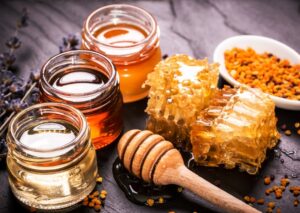
Businessman Igor Liski’s investment holding EFI Group (Effective Investments) has launched Beehive Cosmetics, a line of premium hair care products based on honey produced by the holding’s Beehive plant.
“A new business is always a love for creating something special. I’d like to introduce you to a new project that came about thanks to my great passion for quality honey. The whole team worked day and night on a unique formula, we are just very proud of its unique natural composition. And it is very, very beautiful! So, we are all in for something special – the presentation of our Beehive Cosmetics brand and a line of premium hair care products,” Liski wrote on Facebook.
The EFI Group press service told Interfax-Ukraine that the Beehive Cosmetics brand is a joint effort by EFI Group founder Igor Liski and former Henkel Ukraine CEO Nina Dombrovska, who have been working together to create the company for three years and are co-owners of the project.
“Our product line is a unique complex of natural honey-based hair care cosmetics that combines the best natural ingredients with state-of-the-art active ingredients and high production technologies. We have a great opportunity to produce high-quality products in Ukraine, which is important for stimulating domestic demand and supporting domestic producers,” Dombrowska said.
She added that the founders of the project aim to build a strong brand that can be competitive in other markets in the future.
The presentation of the honey-based cosmetics line will take place on Monday at the Superwoman forum. In addition, the brand’s Instagram page periodically holds contests among its followers. The winners are given the opportunity to test Beehive Cosmetics.
EFI Group was founded in 2007 and is engaged in the implementation of business projects in Ukraine. The company’s investment areas include healthcare and medtech, paper, food and woodworking industries, and agricultural supplies.
The company’s businesses include Feednova, an animal fats and feed additives producer, Bigaiv honey production plant, Medical Star healthcare network, Zhytomyr Cardboard Mill, Sam Ecopack, a cardboard packaging manufacturer, Forest Technology, an agricultural products supplier, Efi Agro, and Doc.ua, an online medical hub.
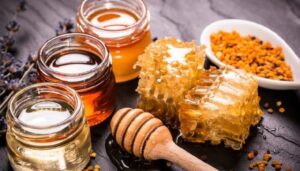
Ukraine and the People’s Republic of China have agreed on the terms of exporting Ukrainian honey to China, and now Ukrainian honey producers can supply their products to the country, the press service of the State Service of Ukraine for Food Safety and Consumer Protection reported.
“Thanks to the coordinated work of the State Service of Ukraine for Food Safety and Consumer Protection and the Ministry of Foreign Affairs, as well as with the support of the Embassy of Ukraine in the People’s Republic of China, all stages of approval of the certificate for honey exports to China have been completed. The procedure for opening the honey market in China, which began in 2019, has been officially completed and the market is open to domestic exporters,” the State Service of Ukraine for Food Safety and Consumer Protection said on Thursday.
According to the head of the service, Serhiy Tkachuk, this is the first export market that the agency opened in 2024.
“A lot of work has been done, many meetings and negotiations have been held, and the state control system in Ukraine has been audited. We plan not to stop, but to continue working to ensure the uninterrupted export of Ukrainian products in order to strengthen economic stability and increase jobs in our country,” Tkachuk emphasized.
The approved form of the health certificate for the export of honey from Ukraine to China is available on the official web portal of the State Service of Ukraine on Food Safety and Consumer Protection in the section “International Cooperation” under the heading “Certificates for export from Ukraine”.
The agency also advised potential honey exporters to familiarize themselves with the guidelines for state veterinary inspectors of Ukraine and market operators who intend to export honey to China.
“The Chinese market is very promising for the export of Ukrainian products and its opening for Ukrainian honey significantly expands opportunities for domestic producers,” the State Service of Ukraine for Food Safety and Consumer Protection expressed confidence.
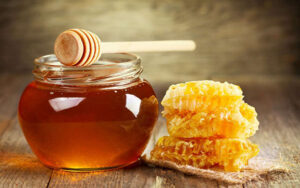
Ukraine’s share in honey imports to the EU in 2022 amounted to 24%, which allowed it to take second place among exporting countries, Beehive reported on Facebook, citing data from Eurostat and the European Federation of Honey Packers and Distributors (F.E.E.D.M.).
According to the report, in addition to Ukraine, the top countries supplying honey to the EU include China (36%), Argentina (10%), Mexico (7%), Turkey (4%), Cuba and Vietnam (3% each).
According to Beehive’s preliminary forecasts, the total amount of honey exported from Ukraine in 2023 will be 5-10% higher than in 2022.
“It can be noted that Ukraine holds its position in the market and has every chance to increase the number of exports, taking away market share from other major players,” the company summarized.
As reported, the investment holding EFI Group (Effective Investments) has started selling Ukrainian honey produced by one of its companies under the Beehive brand in UK supermarkets.
Registered in 2013, Beehive LLC’s production facilities of 5 thousand square meters are located in Cherkasy region. The daily output of finished products is 40 tons. The company’s capacity is designed to produce more than 10 thousand tons of honey per year. The company has two production lines: bottling in barrels and packaging in glass containers of various volumes for retail. Honey production complies with international standards such as Organic Standard, FDA, IFS Food, FSSC 22000, and Halal.
Effective Investments Group was founded in 2007 and is engaged in the implementation of business projects in Ukraine. It operates in various sectors of the economy: agriculture, pulp and paper industry, construction, gas industry, energy, creative industry, mechanical engineering and coal industry.